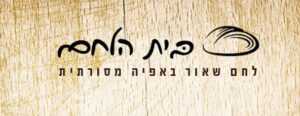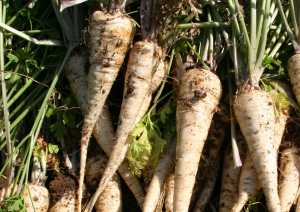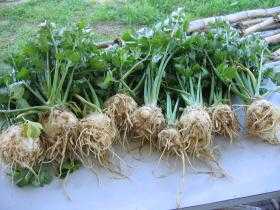In preparation for the Spring holidays, note these delivery changes for Pesach:
During the week of Chol Hamoed Pesach(Monday, April 2 and Wednesday April 4), there will be no deliveries.
Those of you who receive bi-weekly boxes – note the three-week gap!
We will be sending you an email with details of your upcoming delivery dates. Please read it carefully.
Open Day at Chubeza: In keeping with our twice-yearly tradition, we invite you for a Chol HaMoed “pilgrimage” to Chubeza to celebrate our Open Day.
The Pesach Open Day will take place on Wednesday, April 4, the 19th of Nissan, between 1:00 PM-6:00 PM. In tradition, the Open Day gives us an ideal opportunity to meet, tour the field, and nibble on vegetables and other delicacies. Children have their own tailor-made tours, designed for little feet and curious minds, plus activities and a vast space to run around and loosen up. (So can the adults…)
On the Open Day, we also set up a produce stand where you can purchase all you need to replenish your vegetable supply.
The festivities take place in the fields on the outskirts of Moshav Bin Nun. Driving instructions are on our website under “contact us”
We look forward to seeing you all!
___________________________________________
The millers from “Minhat Ha’aretz” mill are offering Matzot Shmurot for Pesach:
Whole Spelt matzah shmurah: crispy (15-16 pcs) or soft (6-7 pcs) 1 kg -190 NIS Crispy spelt matza 1/2 kg – 105 NIS
Organic Israeli Whole Wheat matzah shmurah: crispy (15-16 pcs), or soft (6-7 pcs) 1 kg – 140 NIS Crispy wheat 1/2 kg – 85 NIS
Spelt & wheat matza are supervised from the time of harvest, handmade, and baked in 18 minutes.. Kashrut supervision of Badatz Birkat Eliyahu of Rabbi Shmuel Eliyahu, Badatz Halichot Olam of Rabbi Yitzchak Cohen and under the supervision of Rabbi Gross badatz hanihay hayeshivot.
New unique and exclusive: Organic crispy oatmeal matzah shmurah, 1/2 kg (7-8 pcs) – 125 NIS Supervised from the hour of grinding, handmade, and baked in 18 minutes. Kashrut supervision of Badatz Birkat Eliyahu of Rabbi Shmuel Eliyahu
Please order ASAP via e-mail – orders close on March 22nd. The matzot will be delivered on the week before Passover.
______________________________________
 Ido, the baker par excellence of Beit HaLechem bakery, has new bread sizes, and new lower prices! See our Order System for a description of the various excellent, delectable leaven breads that he bakes.
Ido, the baker par excellence of Beit HaLechem bakery, has new bread sizes, and new lower prices! See our Order System for a description of the various excellent, delectable leaven breads that he bakes.
___________________________________________
Eliezer and Rose of Shorshei Zion have happily informed us that this year a selection of their unique products are Kosher for Pesach, including: green cracker, vegetable cracker, date and walnut granola, hazelnut and mulberry granola, double chocolate cookies and cinnamon ginger cookie, hazelnut fudge and brownies.
_______________________________________
Extending Roots
Spring is almost here. Our bodies have begun the journey to become accustomed to summer, and nature’s every corner is bursting with green glory and a kaleidoscope of colorful blooms. At Chubeza, the recent heat has expedited many processes, almost like propelling growth and sprouting into the fast-forward mode. Migratory birds fly above our heads as we weed and weed and weed, because as usual, our field is chockablock with weeds.
Spring is a time of instability and frequent shifts from heatwaves to rain to haziness to sun to heat and to warmth. Though we are personally interested in the wet component of the various phenomena, it is hard to estimate the amount of rain that will fall over our fields, if any. First we were promised rain on Tuesday, but this date has since been postponed indefinitely. Spring roller coaster time! In the meantime, we have been moving along from the last winter planting to new spring planting and seeding, waiting to see what the heavens hold in store for us now.
This year, one of Chubeza’s first signs of spring is the parsley root, which takes a while to reach maturity. Thus, though we seed it in the beginning of autumn, it is only ready for harvest in the middle of winter, and always brings us great joy when it arrives. This year, our first two seeding rounds failed to sprout, and only after we changed the seeds did the pretty green parsley sprouts begin to develop. This is why she is just now joining her good friend and distant cousin the celeriac, which we plant and do not seed, therefore he arrives sooner.
This week we turn the spotlight on these two spectacular roots who conceal their growth, but when they finally emerge give a rousing reason to bring out the soup pot and celebrate.
Both the parsley and celeriac roots belong to the umbelliferae family (along with the carrot, coriander, dill, fennel and others). They perform a double duty for your soups: they’re yummy and filling to munch on, plus they add fragrance and flavor. Each of these roots has a green, stalk-like and faster growing “twin brother” growing above earth (leaf celery and parsley leaves), which grow faster and have different uses in the kitchen. This week we’ll go a few inches under and talk about each member of the root duo.
Every plant needs roots and leaves, of course, and each component works in opposite directions. The roots draw up the nutrients from the earth, and the leaves act as conduits to transform sunrays into available energy for the plant. This is why all parsley leaves have a root, and every parsley root has leaves (which look like… parsley, of course.) But first, to clarify matters: celeriac and celery leaves, as well as parsley root and parsley leaves (and you can add the beet root and Swiss chard greens or beet greens) are two different types of the celery/parsley/beet plants, and not simply different parts of the same plant.

Every parsley leaf boasts a root, and every parsley root has leaves, but the leaf parsley is satisfied with modest, thin roots and does not develop a thick root. The varieties of leaf parsley and parsley root were developed over the years by farmers in the ongoing process of selecting preferred species and cultivating them. Some farmers kept seeds from year to year from the plants with the biggest leaves, yet the mildest or best taste or highest resistance to extreme temperatures or pests. Other farmers kept the seeds of plants whose roots thickened and lengthened. Thus the segregation of the species was born – differentiating the parsley grown for its leaves from that which we call “root parsley,” a savory delight to add to the soup.
The flavor of root parsley has been described as a combination of celery, carrot, parsley and turnip. In short, something distinctive and indefinable. Best to just go ahead and taste it! Root parsley is somewhat sweet, but also earthy (as are most roots). For those who are familiar with the parsnip (long and elongated root, confusingly similar in appearance), note that the parsley root is not a parsnip! Though it looks a lot like the parsnip, the parsley root’s flavor is very different and less sweet.
Leaf parsley originated in the European Mediterranean area, but the root was probably cultivated more in northern Europe, perhaps due to the fact that roots can be stored for longer periods during that region’s harsh winters. The earliest mention of the parsley root is in 16th century Germany. Other names for the root attest to their geographic connections: “Dutch Parsley” and “Hamburg Parsley.” Because it was so loved in the cold European countries, it earned the nickname “Petoushka.”
Root parsley only grows in wintertime. Unlike its sister which also thrives in summer – even under the scorching Israeli sun – the root parsley hates heat, and grows in winter’s low temperatures and high humidity. It also needs a lot more time to reach maturity. The roots appearing in your boxes were seeded in autumn and have been growing underground for almost four-and-a-half months now (leaf parsley is ready in two to three months). The main challenge in growing root parsley is the thinning-out process. This parsley’s elongated roots need space to grow and fatten up, so it’s crucial to thin the bed which was manually seeded and thus grows plants in dense proximity. When we thin them, we remove some of the young sprouts, allowing their siblings some more “growing space.”
Both stalk celery and celeriac are domesticated species, meaning that they were cultivated over hundreds of years. Farmers sought celery’s thickened root, selecting from season to season only those varieties which produced the chubbiest, biggest roots, or rather the round roly-poly roots. For these plants, the stems remained short and thin, with a far more pronounced taste than the mild flavor of stalk celery. Often the stems are hollow, like a straw. When you look at a bed of stalk celery alongside one of celeriac, it’s easy to identify them by the different way the leaves grow. The former are erect and long, the latter chubby and spread out.
Celery is a plant which grows slowly. It starts with its teeny, tiny seeds which take their time, three to five weeks, till they sprout. After their diminutive sprouting, they need at least another two months of devoted care in the warm, pampered temperature of the plant nursery. Only after three or more months are they ready to be planted. We receive the young’uns when they’re approximately three months of age and ready to be lifted out of their black plastic cubes and placed in Chubeza’s fertile earth.
Celery loves fertile earth and lots of water. As a plant which originated in the swamps, it likes humidity in the earth and also in storage, which is why it grows in wintertime in Israel. The Israeli summer is difficult and dry for the crisp celery plant. After three months in the nursery, it needs another three months to reach the prime age at which its leaves and stems can be harvested. The specie which develops a thick root is even more patient, waiting another month under the cozy cover of Mother Earth and refusing to be coaxed out of its warm bed to the cold, raging winter. A simple calculation leads to the conclusion that the lovely celeriac visiting your boxes this week was created seven months ago!
And even when their time has come, the celeriac and parsley root still hold on to the earth with all their might, and are not easily convinced to emerge. When we harvest them, we use a pitchfork to loosen the earth surrounding the parsley roots, or a knife to gently cut the slender roots surrounding the celeriac. Upon retrieving them from the earth, we attempt to shake them well to release the remaining clumps of earth still caught within. After this initial cleansing, we march them proudly to our vegetable washing tubs where they soak for a while. Even so, when they arrive in your boxes, you will most likely still see remains of dirt. Immerse them in water for some 30 minutes to expedite the final cleaning.
Holding these two yummy roots in your palms, you must want to rush to the kitchen to prepare some soup. But wait! First have a look at the great suggestions in our recipe section for a variety of delectable uses for these unique roots. A must!
Lastly, in honor of our search for roots and the last week of the joyful month of Adar, I remembered this charming picture sent by Daniel from Modi’in. The caption read: “Do Chubeza vegetables have a secret, enchanted life where they dance the night away?”
Wishing you a sunny week with rain in the offing someday…
Alon, Bat Ami, Dror, Yochai and the entire Chubeza team
_________________________________________
WHAT’S IN THIS WEEK’S BOXES?
Monday: Cauliflower/cabbage, carrots, fava beans/Jerusalem artichoke, cucumbers, Swiss chard/spinach/kale, tomatoes, potatoes, parsley/coriander, Romaine lettuce/red lettuce, beets, fresh garlic/leeks.
Large box, in addition: Radishes/kohlrabi, garden or snow peas, celeriac/parsley root.
Wednesday: Cauliflower/cabbage, carrots, fava beans, cucumbers, tomatoes, potatoes, parsley/coriander, Red lettuce, beets, fresh garlic/leeks, celeriac/parsley root, radish.
Large box, in addition: Swiss chard/spinach/kale, Jerusalem artichoke/kohlrabi, garden or snow peas.





